Solar eclipse of November 12, 1985
| Solar eclipse of November 12, 1985 | |
|---|---|
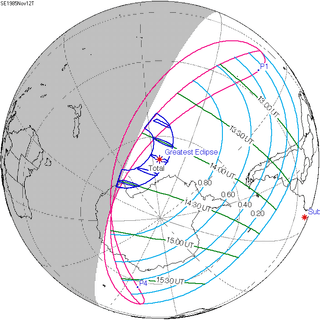 Map | |
| Type of eclipse | |
| Nature | Total |
| Gamma | -0.9795 |
| Magnitude | 1.0388 |
| Maximum eclipse | |
| Duration | 119 sec (1 m 59 s) |
| Coordinates | 68°36′S 142°36′W / 68.6°S 142.6°W |
| Max. width of band | 690 km (430 mi) |
| Times (UTC) | |
| Greatest eclipse | 14:11:27 |
| References | |
| Saros | 152 (11 of 70) |
| Catalog # (SE5000) | 9477 |
A total solar eclipse occurred on November 12, 1985. A solar eclipse occurs when the Moon passes between Earth and the Sun, thereby totally or partly obscuring the image of the Sun for a viewer on Earth. A total solar eclipse occurs when the Moon's apparent diameter is larger than the Sun's, blocking all direct sunlight, turning day into darkness. Totality occurs in a narrow path across Earth's surface, with the partial solar eclipse visible over a surrounding region thousands of kilometres wide. It was visible only near Antarctica.
Related eclipses
Solar eclipses of 1982-1985
Each member in a semester series of solar eclipses repeats approximately every 177 days and 4 hours (a semester) at alternating nodes of the Moon's orbit.
Note: Partial solar eclipses on January 25, 1982 and July 20, 1982 occur in the previous lunar year eclipse set.
| Ascending node | Descending node | |||
|---|---|---|---|---|
| Saros | Map | Saros | Map | |
| 117 | 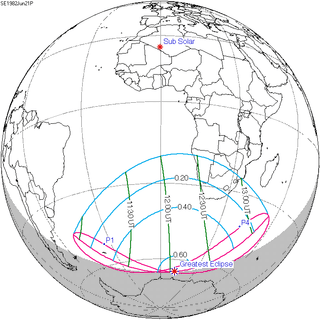 June 21, 1982 Partial |
122 | 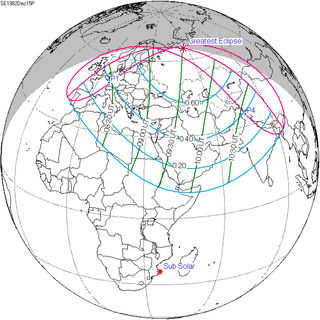 December 15, 1982 Partial | |
| 127 | 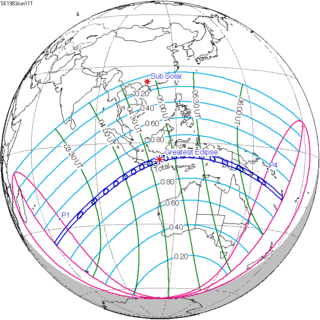 June 11, 1983 Total |
132 |  December 4, 1983 Annular | |
| 137 | 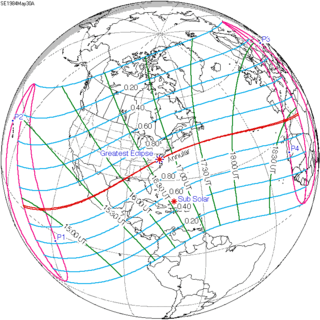 May 30, 1984 Annular |
142 Partial from Gisborne, NZ | 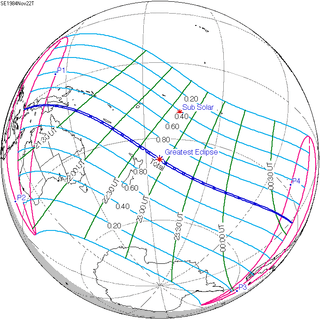 November 22, 1984 Total | |
| 147 | 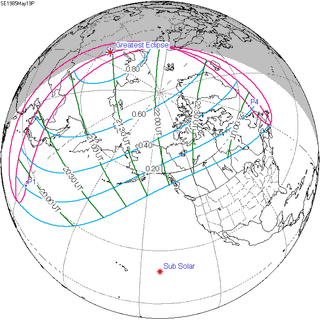 May 19, 1985 Partial |
152 |  November 12, 1985 Total | |
Notes
References
- Earth visibility chart and eclipse statistics Eclipse Predictions by Fred Espenak, NASA/GSFC
| Wikimedia Commons has media related to Solar eclipse of 1985 November 12. |
